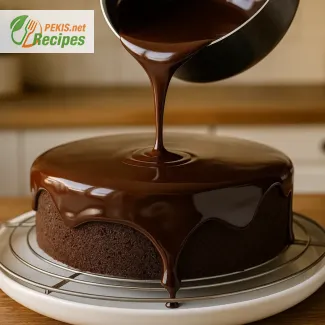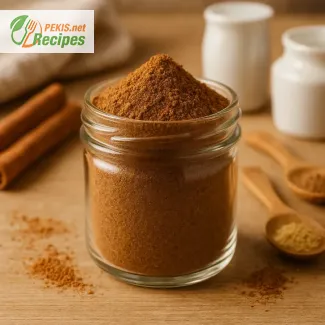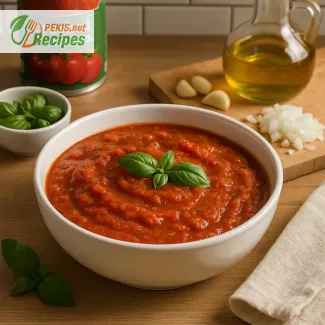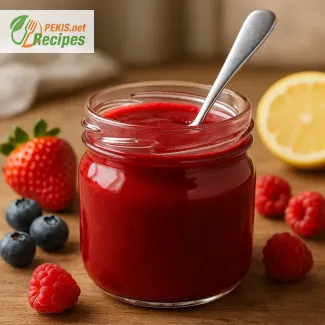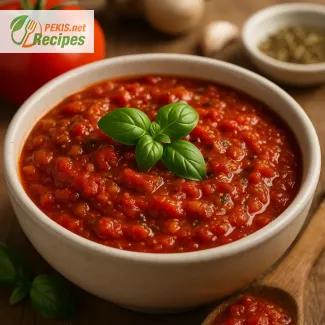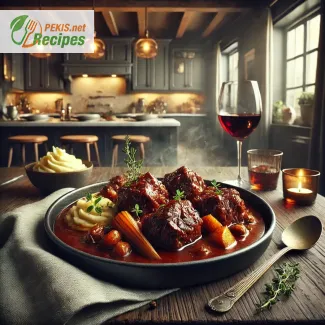
A Culinary Delight: The Rich and Savory World of Oxtail
The Allure of Oxtail in Gastronomy
Oxtail has long been considered a hidden gem in the culinary world, a cut of meat that transforms from a humble, bony section into an opulent and deeply flavorful dish. Traditionally used in stews and slow-cooked recipes, oxtail offers a succulent texture and unmatched depth of flavor, making it a favorite among chefs and food enthusiasts alike.
This gelatin-rich cut, derived from the tail of cattle, is revered for its ability to create rich, velvety sauces and broths, making it the perfect ingredient for hearty meals that exude comfort and indulgence. Whether braised in a wine-based reduction, simmered in a robust stew, or cooked in a fragrant broth, oxtail is an experience worth savoring.
The Unique Composition of Oxtail
Unlike other cuts of beef, oxtail consists of meaty sections interspersed with bone, cartilage, and connective tissue, which break down during cooking to create a luxurious, silky texture. When prepared correctly, the result is fall-off-the-bone tenderness infused with deep, beefy goodness.
Its collagen-rich composition not only enhances texture but also contributes to a natural, thickened consistency in broths and gravies, eliminating the need for artificial thickeners. This makes oxtail an ideal choice for those who appreciate dishes with a natural umami richness and comforting warmth.
Oxtail in Different Cuisines
Throughout history, oxtail has been a staple in many global cuisines, each culture bringing its own unique touch to the preparation of this flavor-packed ingredient.
Classic European Oxtail Preparations
In European cuisine, particularly in French and Italian traditions, oxtail is often braised in a rich red wine sauce with aromatic vegetables, creating an exquisite dish that melts in the mouth. The famous Rabo de Toro, a slow-cooked Spanish oxtail stew, is a celebrated delicacy enjoyed with crusty bread and a glass of full-bodied red wine.
The Comfort of Caribbean and African Oxtail Dishes
Caribbean-style oxtail dishes are known for their bold seasoning and aromatic spices, often cooked with allspice, thyme, and scotch bonnet peppers for a dish bursting with warmth and complexity. Jamaican oxtail stew, in particular, is a beloved comfort food, slow-cooked to perfection and served with rice and peas.
In West African cuisine, oxtail is frequently used in deeply flavored soups and stews, such as Nigerian pepper soup, where it absorbs the intense, spicy flavors of the broth.
Asian Influences on Oxtail Recipes
Asian cuisine also embraces oxtail, often using it in broths and noodle soups. In Korean cooking, Kkori Gomtang is a clear yet deeply flavorful soup that highlights the natural beefiness of oxtail, while in Chinese cuisine, oxtail is braised with soy sauce, star anise, and ginger for a dish that is both aromatic and umami-rich.
The Secret to Perfectly Cooked Oxtail
Oxtail requires low and slow cooking to unlock its full potential. Unlike leaner cuts of beef, which can become dry if overcooked, oxtail benefits from extended simmering or braising, allowing the connective tissues to break down, resulting in an incredibly tender and luscious texture.
Key Techniques for Cooking Oxtail
- Braising for Ultimate Tenderness
The most popular method for cooking oxtail involves searing it first to develop a deep, caramelized crust, then slowly simmering it in a flavorful liquid. This technique ensures that every bite is infused with rich, meaty essence. - Pressure Cooking for Convenience
For those who crave oxtail but are short on time, a pressure cooker can reduce cooking time significantly while still achieving that signature tenderness. - Slow Cooking for Depth of Flavor
Cooking oxtail in a slow cooker allows the meat to gradually absorb the seasonings and aromatics, resulting in an unparalleled depth of flavor that enhances stews, curries, and soups.
Pairing Oxtail with the Perfect Accompaniments
Due to its intensely rich and meaty nature, oxtail pairs beautifully with a variety of side dishes that balance its deep flavors.
- Creamy mashed potatoes – The buttery texture complements the richness of braised oxtail.
- Steamed jasmine rice – A neutral base that allows the flavors of the oxtail to shine.
- Crusty artisan bread – Perfect for soaking up the flavorful sauces and gravies.
- Roasted root vegetables – Carrots, parsnips, and turnips add a natural sweetness that contrasts beautifully with oxtail’s savory profile.
Why Oxtail is a Must-Try
Cooking with oxtail is more than just preparing a meal—it’s an experience that highlights the art of slow cooking, flavor development, and culinary tradition. Whether you’re a home cook looking to expand your repertoire or a seasoned chef seeking to perfect a classic dish, oxtail offers a depth of flavor and satisfaction that few cuts of meat can match.
From European braises to Caribbean stews and Asian broths, oxtail continues to captivate palates worldwide, proving that sometimes, the most overlooked cuts of meat create the most unforgettable dishes.
- Prepare the oxtail: Pat the oxtail pieces dry with a paper towel. Season them with salt and black pepper.
- Sear the meat: Heat olive oil in a large Dutch oven over medium-high heat. Brown the oxtail on all sides for about 5-7 minutes. Remove and set aside.
- Sauté the vegetables: In the same pot, add onions, carrots, and celery. Cook for 5 minutes until softened. Add garlic and tomato paste, stirring for another minute.
- Deglaze with wine: Pour in the red wine, scraping the bottom to lift any browned bits. Let it reduce for 5 minutes.
- Slow cook the oxtail: Return the oxtail to the pot. Add beef broth, bay leaves, thyme, and Worcestershire sauce. Bring to a simmer.
- Braise: Cover and cook on low heat for 3.5–4 hours, until the meat is tender and falling off the bone. Alternatively, use a slow cooker on low for 8 hours or a pressure cooker for 45 minutes.
- Thicken the sauce (optional): If a thicker sauce is desired, remove the oxtail and whisk in flour or reduce the liquid by simmering uncovered for 10 minutes.
- Serve: Remove bay leaves, adjust seasoning, and serve hot with mashed potatoes, rice, or crusty bread.
Elevating the Traditional Oxtail Recipe
Enhancing Flavor with Ingredient Substitutions
A classic braised oxtail dish is already packed with deep, umami-rich flavors, but small adjustments can elevate it even further. Choosing the right ingredients and techniques can refine the texture, enrich the sauce, and balance the intensity of the dish.
Selecting the Best Meat Quality
The quality of oxtail plays a crucial role in the final taste and texture. Opting for grass-fed beef rather than grain-fed varieties enhances the depth of flavor, as these cuts tend to have a more robust and earthy taste. If possible, choose freshly butchered oxtail over frozen cuts, as it will provide a more tender and flavorful result.
Using a Flavorful Braising Liquid
While traditional recipes rely on beef broth and red wine, experimenting with different liquids can add complexity to the sauce. Consider the following alternatives:
- Port or Sherry Wine: Adds a slightly sweet, nutty undertone to balance the richness.
- Bone Broth: Increases the collagen content for an extra silky texture.
- Dark Beer: Brings a malty, deep caramelized note that enhances the beefy essence.
- Soy Sauce or Fish Sauce: Boosts the umami depth, making the dish even more savory.
The Role of Aromatics and Herbs
Aromatic vegetables and herbs provide a foundation of flavor, but their choice can significantly impact the final profile. Instead of just using onions, carrots, and celery, try these enhancements:
- Leeks: Introduce a mild sweetness that balances the beefy intensity.
- Fennel: Adds a delicate anise-like aroma that pairs well with rich meats.
- Star Anise & Cloves: Bring a subtle spiced warmth, often found in Asian braised dishes.
- Fresh Thyme & Bay Leaves: Essential for depth, but rosemary can add a more robust herbal note.
Why Home-Cooked Oxtail is Superior
While restaurant-prepared oxtail dishes can be excellent, cooking this dish at home allows for greater control over ingredients, preparation time, and health considerations.
Customizing the Cooking Process
Many commercial kitchens prepare oxtail quickly, sometimes using shortcuts like pre-cooked broths or artificial thickening agents. At home, you can slow cook the dish properly, allowing the natural gelatin and marrow from the bones to create a naturally rich and thick sauce.
Adjusting the Fat Content
Oxtail is naturally high in fat, which adds to its luxurious texture, but excessive grease can be overwhelming. Home cooking allows you to:
- Skim excess fat during braising for a cleaner sauce.
- Chill the dish overnight, then remove solidified fat before reheating.
- Use leaner protein additions, such as mixing in mushrooms or legumes, to balance the richness.
Common Mistakes to Avoid
Even experienced cooks can make errors that affect the outcome of braised oxtail. Avoid these common pitfalls for the best results:
Not Browning the Meat Properly
Skipping the searing step is a major mistake. Browning the oxtail develops a deep caramelized crust, which intensifies the meaty flavor and improves the sauce.
Solution: Always sear the meat in hot oil until golden brown before adding liquids.
Rushing the Cooking Process
Oxtail needs time for connective tissues to break down. Cooking it too fast results in tough, chewy meat.
Solution: Slow-cook for at least 3.5–4 hours or use a pressure cooker for a quicker, but still tender, result.
Overloading with Spices or Acids
While acidity (such as tomatoes or vinegar) enhances the sauce, too much can overpower the natural beefy richness.
Solution: Balance acidity with a hint of brown sugar or caramelized onions to soften the sharpness.
Healthier Alternatives for a Nutrient-Rich Oxtail Dish
Oxtail is naturally nutritious, but some modifications can make it a lighter and more balanced meal.
Reducing Saturated Fat
While oxtail's fat content contributes to its luxurious mouthfeel, a few tweaks can reduce the saturated fat:
- Use leaner cuts: Mix beef shank or short ribs for a similar taste with less fat.
- Skim the fat: After cooking, refrigerate the dish and remove the solidified top layer of fat.
- Incorporate vegetables: Adding extra root vegetables helps absorb excess grease and lightens the dish.
Enhancing Nutrient Content
To boost the nutritional profile, try these additions:
- Mushrooms: Absorb flavors well and add a meaty texture with fewer calories.
- Legumes (Lentils or Chickpeas): Add fiber and plant-based protein, making the dish more filling and heart-healthy.
- Sweet Potatoes: A healthier starch alternative to white potatoes, providing extra vitamins and fiber.
Experimenting with International Variations
If you want to refresh the traditional oxtail dish, drawing inspiration from global cuisines can add new layers of flavor.
Caribbean-Style Oxtail
- Add allspice, Scotch bonnet peppers, and coconut milk for a rich, island-inspired dish.
- Serve with rice and peas for an authentic Jamaican experience.
Asian-Inspired Braised Oxtail
- Braise with soy sauce, ginger, garlic, and star anise for a Chinese-style red-cooked oxtail.
- Serve over steamed jasmine rice or noodles.
Italian-Style Oxtail Ragu
- Slow-cook oxtail with tomatoes, red wine, and Italian herbs, then shred the meat for a hearty pasta sauce.
- Pair with pappardelle or polenta for a rich and comforting meal.
Mastering the Art of Oxtail
Mastering braised oxtail requires patience, attention to detail, and the right selection of ingredients and techniques. By making small but meaningful adjustments, you can create a dish that is deeper in flavor, healthier, and even more satisfying than the traditional version.
Whether you're enhancing aromatics, refining the sauce, or exploring new global flavors, each modification adds a unique touch that turns this comforting, slow-cooked classic into a culinary masterpiece.
This recipe contains gluten if flour is used for thickening. To make it gluten-free, use cornstarch or omit thickening agents. It contains no dairy, nuts, or soy.
Ingredient Substitutions:
- To remove gluten: Replace flour with cornstarch or arrowroot powder.
- For a lower sodium option: Use low-sodium beef broth and reduce Worcestershire sauce.
- For a different flavor: Substitute red wine with balsamic vinegar or pomegranate juice.
- Iron (4.5 mg): Supports oxygen transport in the blood.
- Zinc (8 mg): Essential for immune function and metabolism.
- Vitamin B12 (3 µg): Necessary for red blood cell formation.
- Phosphorus (250 mg): Helps maintain strong bones and teeth.
- Vitamin A (600 IU): Supports vision and skin health.
- Lycopene (from tomato paste): Helps protect cells from oxidative stress.
- Polyphenols (from red wine): Beneficial for heart health.
- Beta-carotene (from carrots): Supports immune function and skin repair.
